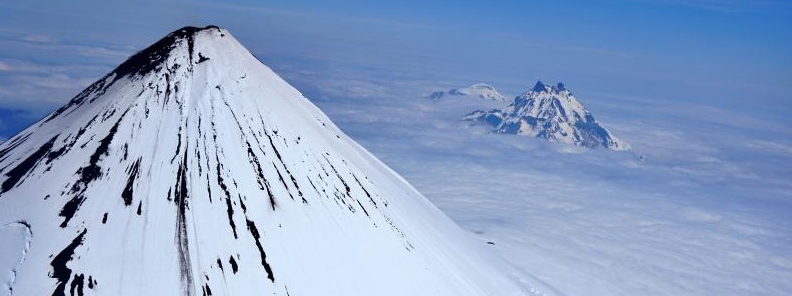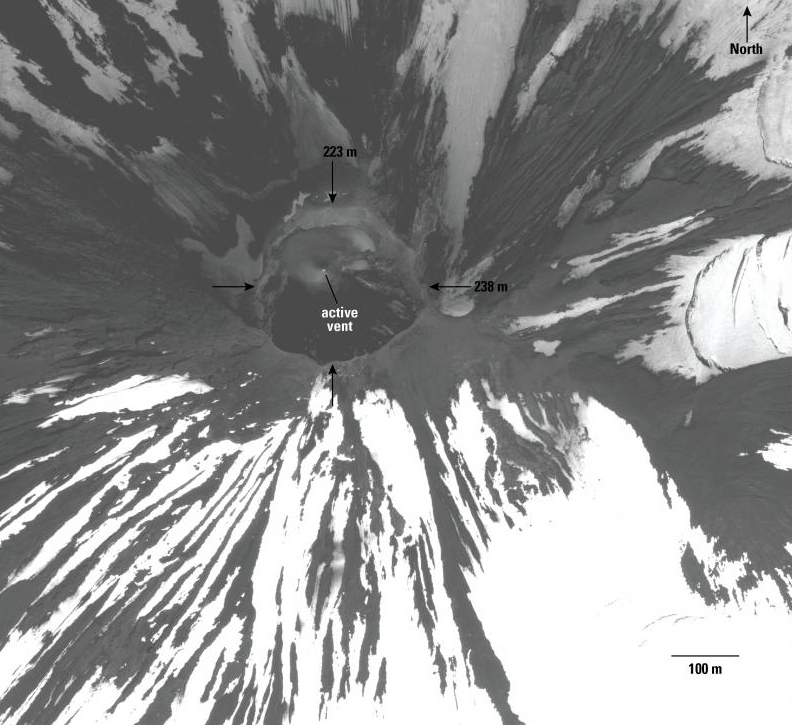Shishaldin volcano alert levels raised, Alaska

The Alaska Volcano Observatory (AVO) raised the Aviation Color Code for Shishaldin volcano to ORANGE and the Alert Level to WATCH on October 17, 2019.
Satellite observations indicated that a lava effusion event began on October 13 and is likely continuing. The activity is confined to the summit area at this time.
Low-level seismicity continues to be observed on the local network. The volcano was obscured by cloudy weather in the most recent satellite and web camera images.
Shishaldin is monitored by local seismic and infrasound sensors, satellite data, a web camera, a telemetered geodetic network, and distant infrasound and lightning networks.

Shishaldin on August 15, 2019. Credit: USGS/AVO
Geological summary
The beautifully symmetrical volcano of Shishaldin is the highest and one of the most active volcanoes of the Aleutian Islands. The 2857-m-high (9 379 feet), glacier-covered volcano is the westernmost of three large stratovolcanoes along an E-W line in the eastern half of Unimak Island.
The Aleuts named the volcano Sisquk, meaning "mountain which points the way when I am lost." A steady steam plume rises from its small summit crater. Constructed atop an older glacially dissected volcano, it is Holocene in age and largely basaltic in composition.
Remnants of an older ancestral volcano are exposed on the west and NE sides at 1 500 -1 800 m (4 920 – 5 900 feet) elevation. There are over two dozen pyroclastic cones on its NW flank, which is blanketed by massive aa lava flows.
Frequent explosive activity, primarily consisting of strombolian ash eruptions from the small summit crater, but sometimes producing lava flows, has been recorded since the 18th century. (GVP)
Featured image: View of Shishaldin Volcano, with Isanotski and Roundtop volcanoes in the background. Credit: USGS/AVO

Commenting rules and guidelines
We value the thoughts and opinions of our readers and welcome healthy discussions on our website. In order to maintain a respectful and positive community, we ask that all commenters follow these rules.